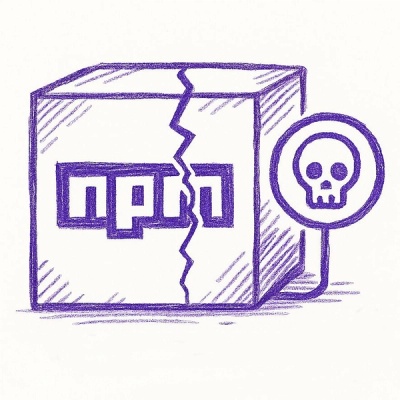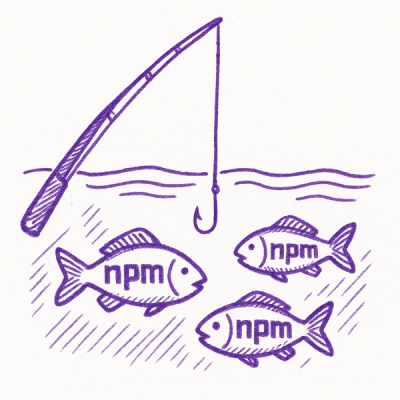Azure Cosmos DB (DocumentDB SQL API) TypeScript interface
This Node.js module provides a TypeScript-based wrapper around the Node.js APIs for Microsoft's awesome SQL-queried schema-free NoSQL database in the Azure cloud, DocumentDB Cosmos DB.
Refer to the DocumentDB API documentation here: https://docs.microsoft.com/en-us/azure/documentdb/documentdb-sdk-node
No TypeScript required — you can use this module with plain JavaScript too (ES3, ES5, or ES6 aka ES2015, ES7 and whatever comes after), and enjoy enhanced Intellisense in an editor that supports TypeScript 2 definition files, such as VS Code.
NOTE: The author of this module is not affiliated with Microsoft, Azure, or Cosmos DB / Document DB.
Goals
This module was written with the following goals in mind:
- Streamline common DocumentDB use cases;
- Enable a better developer experience with accurate Intellisense;
- Reduce clutter by grouping methods into classes and combining some of their functionality;
- Use idiomatic TypeScript 2 (es6 for Node JS) internally and externally;
- Enable asynchronous programming with
async/await and/or Promises (native Node JS).
Change Log
v1.0.7
- Update: CosmosDB Node.js API v1.14, with Session consistency, DisableSSLVerification and ProxyURL options.
- Fixed several typing issues that occur with newer TypeScript compilers.
v1.0.6:
- Fixed an issue with the asyncIterator polyfill
v1.0.5:
- Update: DocumentDB Node.js API v1.12.0 for Cosmos DB, with support for RU/min billing and ConsistentPrefix consistency level.
v1.0.4:
v1.0.3:
- New: Added support for Typescript 2.3's
for await (... of ...) syntax (without breaking support for ES < 6 and TS < 2.3). See example below.
v1.0.0:
- Important: This version now requires TypeScript 2.1+.
- New: Added an
existsAsync method to Collection that uses a select count(1) from c where... query to determine more efficiently if any documents exist that match given ID or properties.
- New: Added
path properties to Database and Collection, which can be used with the underlying Node.js API (through Client.documentClient) if needed.
- New: Most methods now accept an
options parameter to forward feed and/or request options to the underlying Node.js API (e.g. for enableCrossPartitionQuery).
- Improved: Where possible, document IDs are now used to locate document resources instead of mandatory
_self links. This allows for a new overload of the deleteDocumentAsync method that just takes an ID, and removes the need for a query in findDocumentAsync if an ID is passed in (either as a property or as a single parameter). Also, storeDocumentAsync with StoreMode.UpdateOnly no longer requires a _self property, an id property will do.
- Improved: More accurate types for objects passed to and/or returned from
Collection methods. E.g. query results generated by queryDocuments no longer automatically include document properties such as id and _self, because queries may not actually return full documents anyway (or a document at all, e.g. for select value... queries). This is a breaking change since the TypeScript compiler may no longer find these properties on result objects, even for select * queries. The findDocumentAsync and queryDocuments methods now accept a type parameter to specify a result type explicitly.
- Changed: Getting
Client.documentClient now throws an exception if the client connection has not been opened yet, or has been closed. Use isOpen() to check if the connection is currently open.
- Fixed: Operations are now queued properly in
DocumentStream, e.g. calling .read() twice in succession (synchronously) actually returns promises for two different results.
- Fixed: Added
strictNullChecks and noImplicitAny to the TypeScript configuration for compatibility with projects that have these options enabled.
- Fixed: Added TypeScript as a development dependency to
package.json.
Note:
At this point parts of the DocumentDB API feature set are still missing. If your app needs stored procedures, or users and permissions, for example, then please add to this code (preferably as new classes). Pull requests are greatly appreciated!
Tests are sorely needed as well. Perhaps some of the tests can be ported over from DocumentDB itself.
Installation
Use npm to install this module:
npm install documentdb-typescript
Then import this module into your JavaScript or TypeScript code:
const DB = require("documentdb-typescript");
const client = new DB.Client();
import * as DB from "documentdb-typescript";
const client = new DB.Client();
import { Client } from "documentdb-typescript";
const client = new Client();
Usage
This module exports only the following symbols:
Client class: contains methods for dealing with the connection to DocumentDB Cosmos DB account.Database class: represents a database.Collection class: represents a collection, and contains methods for dealing with documents.DocumentStream class: contains methods for reading query results (used as a return type only).StoreMode enum: lists different modes of storing documents in a collection.
Where is Document? —
There is no 'Document' class because documents are really just plain JavaScript objects (of type any), which may or may not have some extra properties (such as _self) depending on where they come from, and are very hard to pin down as such. Also, the results of a query may or may not be full documents, which makes it impossible to predict exact return types. Adding another abstraction layer (à la the .NET API with its set- / getPropertyValue methods) doesn't seem like the right thing to do in JavaScript code.
Client
Start here if you need to work with multiple databases, or set advanced connection options.
async function main(url, masterKey) {
var client = new Client(url, masterKey);
client.enableConsoleLog = true;
await client.openAsync();
var dbs = await client.listDatabasesAsync();
console.log(dbs.map(db => db.id));
console.log(await client.getAccountInfoAsync());
client.close();
}
The original DocumentClient from the documentdb module is kept in the documentClient property, after the openAsync method is called:
A static property Client.concurrencyLimit (number) controls how many requests may be outstanding globally at any time; this defaults to 25. Further requests are held internally (without timing out) until a pending request completes. You may want to increase this number if you are performing a high volume of low-cost operations such as deletions.
Database
Start here if you need to list all collections in a database, or delete it from the account. Nothing else here.
async function main(url, masterKey) {
var client = new Client(url, masterKey);
var db = new Database("sample", client);
var db2 = new Database("sample", url, masterKey);
await db.openOrCreateAsync();
await db.openAsync();
var colls = await db.listCollectionsAsync();
console.log(colls.map(c => c.id));
await db.deleteAsync();
}
Collection
This is where most of the functionality lives. Finding and/or creating a collection, optionally along with the database is easy:
async function main(url, masterKey) {
var client = new Client(url, masterKey);
var db = new Database("sample", client);
var coll = new Collection("test", db);
var coll2 = new Collection("test", "sample", client);
var coll3 = new Collection("test", "sample", url, masterKey);
await coll.openOrCreateDatabaseAsync();
await coll.openOrCreateAsync();
await coll.openAsync();
await coll.deleteAsync();
}
The Collection instance has methods for setting and getting provisioned throughput levels:
async function main(url, masterKey) {
var client = new Client(url, masterKey);
var coll = new Collection("test", "sample", client);
await coll.openOrCreateDatabaseAsync();
await coll.setOfferInfoAsync(500);
console.log(await coll.getOfferInfoAsync());
}
Storing documents
This module abstracts away most of the work involved in creating, updating, and upserting documents in a collection.
async function main(url, masterKey) {
var client = new Client(url, masterKey);
client.enableConsoleLog = true;
var coll = new Collection("test", "sample", client);
await coll.openOrCreateDatabaseAsync();
var doc = { id: "abc", foo: "bar" };
doc = await coll.storeDocumentAsync(doc, StoreMode.CreateOnly);
doc.foo = "baz";
doc = await coll.storeDocumentAsync(doc, StoreMode.UpdateOnly);
doc.foo = "bla";
doc = await coll.storeDocumentAsync(doc, StoreMode.UpdateOnlyIfNoChange);
var doc2 = { id: "abc", foo: "bar" };
var doc3 = { id: "abc", foo: "baz" };
await Promise.all([
coll.storeDocumentAsync(doc, StoreMode.Upsert),
coll.storeDocumentAsync(doc)
]);
await coll.deleteDocumentAsync(doc);
await coll.deleteDocumentAsync("abc");
}
Finding documents
There are a number of ways to find a document or a set of documents in a collection.
async function main(url, masterKey) {
var coll = await new Collection("test", "sample", url, masterKey)
.openOrCreateDatabaseAsync();
var exists = coll.existsAsync("abc");
var customerExists = coll.existsAsync({
isCustomer: true,
customerID: "1234"
})
var doc = await coll.findDocumentAsync("abc");
try {
var user = await coll.findDocumentAsync({
isAccount: true,
isInactive: false,
email: "foo@example.com"
});
console.log(`Found ${user.email}: ${user.id}`);
}
catch (err) {
console.log("User not found");
}
var stream = coll.queryDocuments();
var stream2 = coll.queryDocuments("select * from c");
var stream3 = coll.queryDocuments({
query: "select * from c where c.foo = @foo",
parameters: [
{ name: "@foo", value: "bar" }
]
});
}
Iterating over query results
The queryDocuments method on the Collection class is one of the few methods that does not return a Promise. Instead, it returns a DocumentStream instance which can be used to iterate over the results or load them all in one go.
The DocumentStream class exposes a number of methods (e.g. forEach and mapAsync)
If you do not wish to use the Typescript/ES6 await keyword, you can use the Promise object returned by next, read, forEach, or mapAsync instead.
async function main(url, masterKey) {
var coll = await new Collection("test", "sample", url, masterKey)
.openOrCreateDatabaseAsync();
var allDocs = await coll.queryDocuments().toArray();
type FooResult = { foo: string };
var stream = coll.queryDocuments<FooResult>("select c.foo from c");
while (true) {
var { done, value } = await stream.next();
if (done) break;
console.log(value.foo);
}
await stream.resetAsync();
for await (const doc of stream) {
console.log(doc.foo);
}
await stream.reset().forEach(doc => {
console.log(doc.foo);
});
var ids = await stream.mapAsync(doc => doc.id);
console.log(ids);
var newest = await coll.queryDocuments(
"select top 1 c._ts from c order by c._ts desc")
.read();
if (!newest)
console.log("No documents");
else
console.log("Last change " +
(Date.now() / 1000 - newest._ts) +
"s ago");
coll.queryDocuments(
"select top 1 c._ts from c order by c._ts desc")
.read()
.then(newest => {
if (!newest) console.log("No documents");
else console.log("Last change" );
});
}



